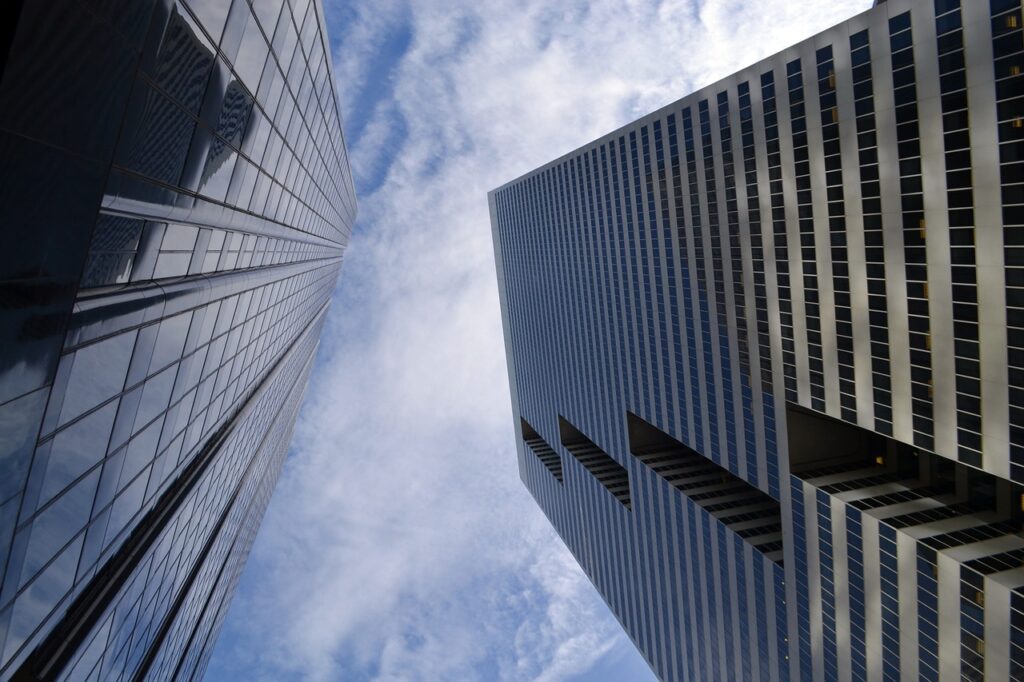After one of the swiftest economic declines in history at the start of the COVID-19 pandemic, the U.S. economy has experienced a significant recovery that began in the third quarter of 2020 and is continuing into 2021, experts said on Friday at the Commercial Economic Issues and Trends Forum. The panel discussion during the virtual REALTORS® Legislative Meetings(link is external) explored the implications of the recovery for commercial real estate, predicting that hospitality, retail, multifamily, and industrial are likely to see gains this year. Even the office sector, which has been plagued with higher-than-average vacancy rates, is showing signs of potential.
Personal income is up 10.7% year over year, said Lawrence Yun, the National Association of REALTORS®’ chief economist, and personal savings is up an astonishing 302% for the same period. Considerable capital is likely to be pumped into the economy, he said, with consumers eager to tap into a year’s worth of savings and what remains of their stimulus funds. “If we look at potential, it’s even greater than we could have expected,” said Yun. “We’re looking at ‘revenge’ spending, where people have been stuck at home, saving up money, and now they can go out again.”
Online retail sales have been booming, Yun stated, reaching a peak of $871.2 billion 2021 in February—up from $676.4 billion in April 2019—while in-person sales at department stores have declined slowly but steadily from January 2000 to February 2021, falling from just over $200 billion to approximately $100 billion. Yun indicated that there could still be some potential for recovery for department stores. “It remains to be seen if people are willing to get back into stores,” he said. “They have savings, and now they want to go out again. Let’s see how things play out.”
Yun noted that consumers are still showing caution in their spending on hotels, restaurants, and recreation-based businesses like theaters and live sports, though the general trend is positive. He predicted that the continued easing of pandemic-related restrictions across the nation could help. “The numbers are showing that vaccinations are making progress,” said Yun. “So, going to restaurants, going to recreation, games, all of that could begin to burst out.”
Yun predicted that apartment rent prices, which had been decelerating during the pandemic, will trend upward, noting that while rents have declined in gateway cities like Seattle, Boston, and San Francisco, 93% of smaller metro areas have seen an increase in rent prices as of April.
While the increase in rents is good news for housing providers, Yun does add the caveat that an increase in rent prices could contribute to an increase of pressure on consumers, which combined with other factors, points to an ongoing rise in inflation.
The economy is fully back, Yun stated, but jobs are still lagging, and the U.S. will need 8 million more jobs to reach pre-pandemic levels. At the same time, gasoline prices are up 22% from a year ago, Yun said, adding that consumer price inflation has risen above 2%. In addition, producer prices on construction materials, such as cement, aluminum, and copper, are all likely to rise as the economy strengthens, he said.
“Inflation could possibly stay stubbornly high above 2%,” said Yun, adding that inflation impacts commercial real estate practitioners through mortgage rates. “The mortgage rate can rise if inflation continues to pick up and remains high,” he explained.
Another area of potential concern is office vacancies. Even though workers are returning to the office, he said, and the percent of workers who are telecommuting has fallen to 21% as of March—down from a high of 35.4% in May 2020—more than half of NAR commercial members reported in the first quarter of 2021 that more companies are leasing smaller offices with shorter-term leases of two years or less. “People are becoming cautious about leasing,” said Yun.
Industrial warehouse and land, however, remain bright spots for commercial, Yun noted, showing an increase of 2% and 3% respectively in sales volume year-over-year in the first quarter of 2021.
Overall, Yun forecast GDP growth of 4.5%, job gains of 4 million, and consumer price inflation of 2.7% for 2021. He also predicted vacancy rates of 6.2% for multifamily, 4.8% for industrial, 13.0% for retail, and 16.7% for office for the year.
John Worth, executive vice president for research and investor outreach with Nareit, shared Yun’s optimism on the outlook for commercial real estate in 2021, noting that REIT funds invested in the relatively new sector of digital real estate, which includes cell towers, data centers, and logistics facilities, have performed particularly well. “This is not our parents’ or our grandparents’ commercial real estate,” Worth said. “CRE is changing as the economy changes.”
Worth noted, as Yun did, that telework is impacting office vacancies and causing companies to re-evaluate their use of office space. “I think work-from-home is going to be the single largest outstanding question for commercial real estate coming out of COVID-19,” said Worth.
However, he also maintained that there is a lot of potential in office, predicting a rebound in the sector after a period of experimentation, during which companies try out different ways to organize office space and employees. “One thing a lot of organizations are going to learn is that it’s critical to get younger employees who need to build relationships together in a physical space,” he said. “I am very bullish on the prospects for the future of offices.”

©National Association of REALTORS®
Reprinted with permission


